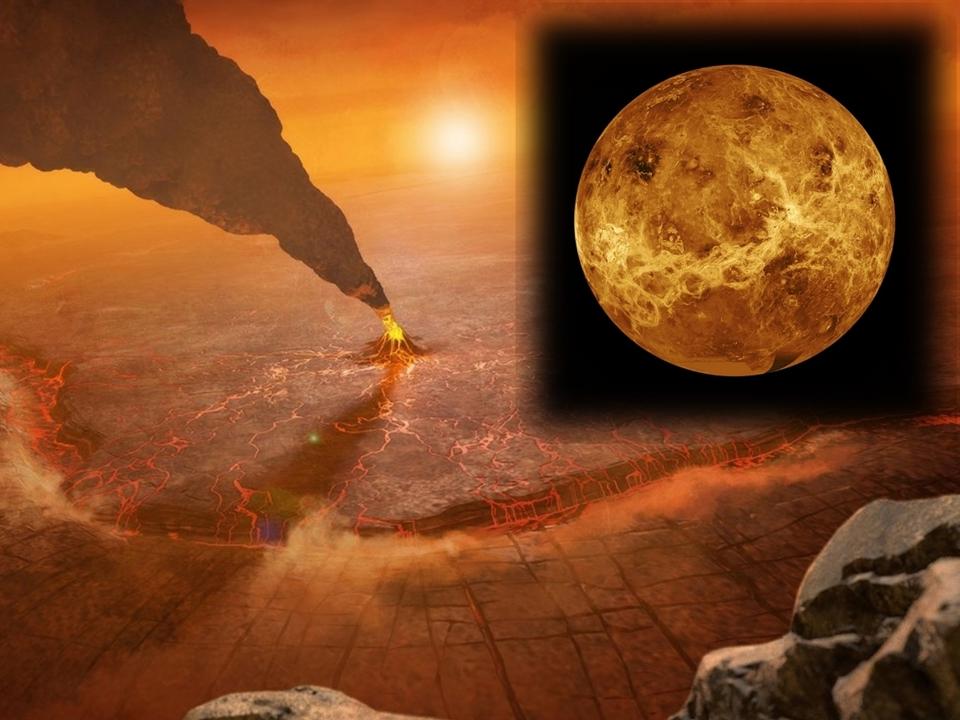``Like iron in a forge'' US solar probe successfully captures visible light image of Venus surface (Science Portal)
The surface of Venus. Images taken by the Parker Solar Probe wide-field camera (left: provided by NASA, Johns Hopkins University, US Naval Research Laboratory) and the same area observed by Magellan's radar in the 1990s (Magellan team, NASA, Courtesy of the U.S. Geological Survey). The center is the highest plateau on Venus
The US solar probe "Parker Solar Probe" succeeded in photographing the surface of Venus covered with thick clouds in visible light. NASA and others have announced that it is the first time in history that visible light photography has been performed from outer space rather than from a lander. This was achieved by a "flyby" approaching Venus while sailing and observing it while passing by. It approached within 8.53 million kilometers from the Sun on the 25th of this month. During the Venus flyby in July 2020, the observation team attempted to observe clouds on Venus using a wide-field camera for observing the "solar wind" blowing out of the Sun's atmosphere. At this time, I was able to photograph the surface of Venus unexpectedly, so I planned to photograph the following flyby in February 2009. Clouds on Venus block most of the visible light on the surface, but some wavelengths close to near-infrared light are transmitted. In the daytime, this is also obstructed by the sunlight, but at night, we succeeded in capturing the scorching heat of the surface.

As a result of the shooting, we were able to distinguish topography such as continents, plateaus, and plains. The lowlands are hot and bright, and the highlands are cold and dark. The topography matches radar images taken by the US Venus probe Magellan in the 1990s. The results were published on the 9th of this month in the US geoscience journal "Geological Research Letters," and announced on the 10th by NASA and others. Brian Wood, a researcher at the U.S. Naval Research Laboratory, who was part of the observation team, said, "I was surprised by the images. Even at night, the surface of Venus is extremely hot, at about 860 degrees Fahrenheit (about 460 degrees Celsius). shining," he said. The surface of Venus was first photographed in 1975 by the former Soviet Union's Venera 9. Since then, in addition to its successor, observations have been made with the radar of Magellan and the infrared rays of Japan's Akatsuki, which was put into orbit in 2016 and is in operation.
An artist's impression of the Parker Solar Probe approaching the Sun (courtesy of NASA)
NASA said the results could lead not only to confirmation of Venus' topography, but also to an understanding of the specific mechanisms by which volcanic activity produced a thick atmosphere. It is also useful for understanding geology and minerals, as well as elucidating the history of planets, including Earth and Mars, that were formed at the same time as Venus. "Although the Parker Solar Probe is primarily intended for solar observations, it provided exciting bonus data on Venus that we did not anticipate at the start of the project." In the sky above the sun, there is an atmosphere called "corona", which is a state (plasma) in which hydrogen atoms are decomposed at a high temperature of over 1 million degrees. Explosive phenomena called "flares" occur here, and high-energy particles fly out into outer space. If it is large, a magnetic storm will occur on the earth, and human life will be hindered by power outages, satellite failures, communication failures, etc. The Parker Solar Probe will plunge into the corona and make observations, aiming to elucidate the mechanism of solar phenomena such as coronas and flares. Launched in 2018, it entered the corona for the first time in history in April last year. It will approach the Sun 24 times in 25 years.
Image of Solar-C (Provided by NAOJ and JAXA Solar-C Working Group)
Japan is conducting supporting observations with the solar observation satellite "Hinode (Solar B)" when the aircraft is approaching the sun. In addition, according to the government's basic plan for space planning, the company will develop the successor to Hinode, Solar-C, aiming for a launch in fiscal 2026. We aim to elucidate the mechanism of plasma formation and flare generation by capturing the sun's ultraviolet rays.
Last updated: Science Portal